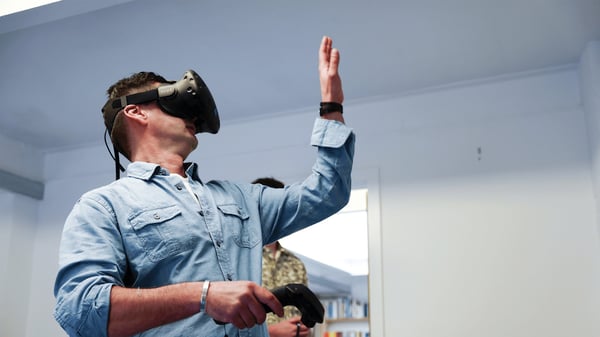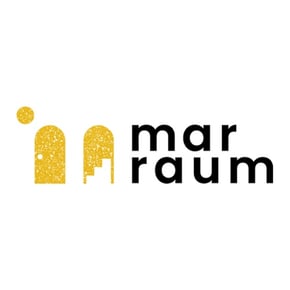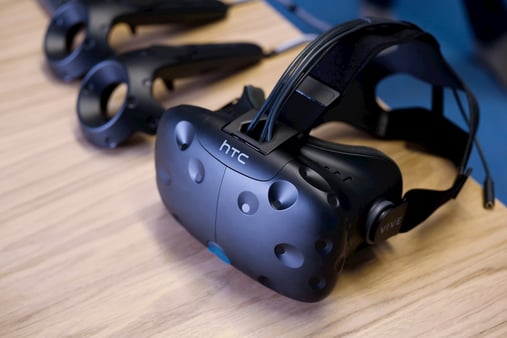Innovation is a core pillar of architecture. It’s from this relationship between innovation and design that the use of virtual reality (VR) comes into play. VR allows architects and other professionals to build 3D models that consumers can immerse themselves in before real-world building work even begins.
Although VR has been around for many years, it is beginning to revolutionise the industry as we know it. The technology transforms the buyer's journey and significantly impacting the way buildings are conceived, visualised, and experienced.
At Marraum, we proudly embrace VR as an irreplaceable tool in our service offering to our clients. But virtual reality isn’t a mainstay in modern architecture firms yet – so why exactly should more architects be taking notice?
In this blog, we will explore the role VR plays in the modern buyer's journey and why it is the most reliable way of ensuring the end product meets the client's expectations.
The obstacles to using architectural VR
We’ve written previously about why many architects aren’t embracing VR just yet, concluding that resistance to change and workflow integration issues – as well as lack of awareness and technical knowledge – are currently the main deterrents to ‘VR architects’ being standard practice. These are obstacles that will naturally be overcome in time, so this notwithstanding, what are the key reasons VR should be used by architects (and embraced by clients)?
VR as part of the buyer’s journey
In recent history, the modern buyer's journey has evolved significantly. Consumers seek more immersive and interactive experiences before making significant investments, be that for cars, technology or houses.
VR affords architectural clients the access to such an immersive experience. Similar to if you were to test-driving a new car, it helps potential car buyers decide whether a car meets their requirements and preferences, letting them evaluate the architectural design.
This approach creates and environment where clients can make informed decisions, open up discussions about their preferences, and identify any design flaws that may have gone unnoticed otherwise.
Traditionally, clients receive 2D drawings and static models to visualise the final building. However, these methods often failed to provide a detailed understanding of the space and left room for misunderstandings. This could potentially lead to costly design revisions later on.
VR technology changes this landscape entirely – not just for the architects designing the spaces, but for the clients assessing them as well. By creating a virtual representation of the architectural design, clients can now explore and experience their prospective space as if they were physically present within it.
This level of immersion in the design process has a significant impact on decision-making, as clients can accurately understand the scale, spatial qualities, and overall feeling of their building. Also, amendments to the 3D design are less time-intensive to make, resulting in an overall streamlined process.
Read more: How cost effective is VR architecture?

VR as a means of capturing the client’s vision
During the process of building a brief, VR can be used to ensure that the final build aligns precisely with the client's vision. By engaging clients through VR technology, architects can identify potential design issues at an early stage, this can help prevent costly and time-consuming revisions during the construction phase. Going to this level of detail not only saves resources but also leads to greater client satisfaction as they see their dream project come to life as intended, without the stress of costly redesigns further down the line.
Moreover, VR enables architects to experiment with various design alternatives quickly. Clients can carefully consider layouts, finishes, and styles. This accurate visual representation of their design enables them to make well-informed decisions that best suit their needs and preferences, without needing to have an understanding of how to interpret 2D building designs.
This contributes to an experience that aligns with what consumers should expect from a high-value purchase. We want to be able to ‘test-drive’ or explore an option to its fullest to reduce the risk of the purchase, and architectural VR allows exactly this opportunity. With VR, architectural investments move away from being bought off paper and instead become more reflective of the immersive experience found with other high-value purchases.
How does it work in practice?
At Marraum, we use VR as standard practice across all our architectural projects as a key component of our design process. This allows clients to virtually walk through their future homes, enabling them to provide immediate feedback on elements such as layout, lighting, and material choices. The result is improved client satisfaction and a clear understanding of their new space. Explore our projects to see this in action.
Experience your future home in VR with Marraum
Virtual reality is a game-changer for architects and our clients. It has revolutionised our clients journey by offering an immersive and interactive experience, similar to test-driving a car or viewing a house before purchase. Through VR technology, clients can confidently engage with architectural designs, ensuring that the end product is aligned to their expectations.
As technology continues to improve, we believe more architects will embrace VR as an essential tool in their design process to create spaces that inspire and delight their clients. At Marraum, we’re proud to be at the forefront of using VR in the architectural space. If you have a project that you want to visualise fully during the design phase, we’d love to hear from you – get in touch today to find out more about working with us.




